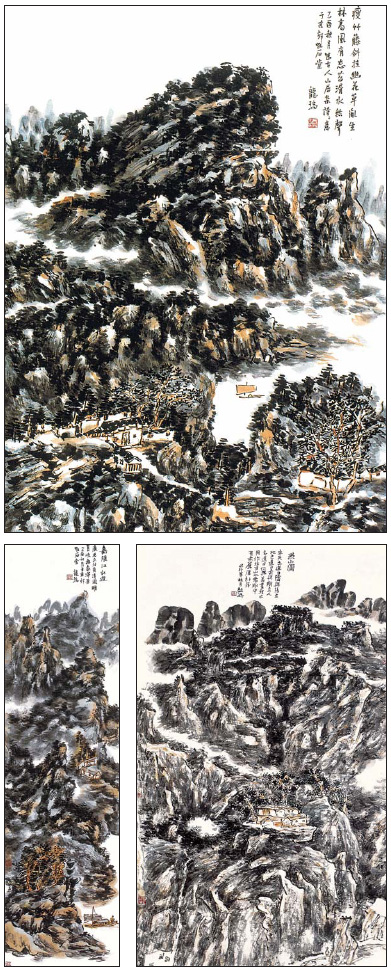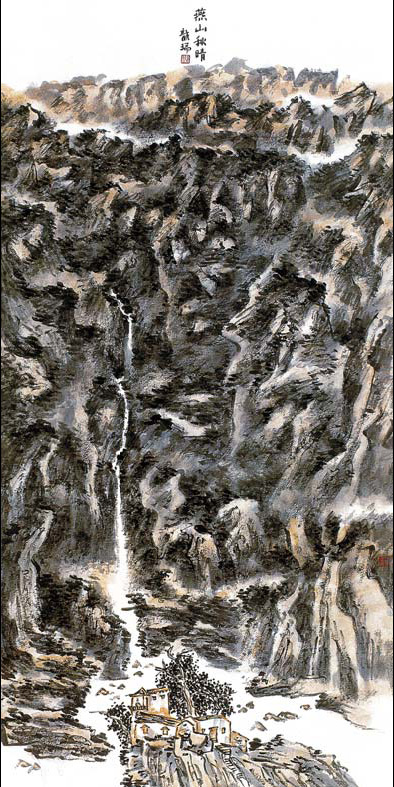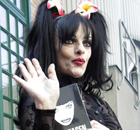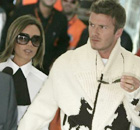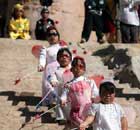Culture
Painter's passion brings history to life
By ZENG QINGKAI (China Daily)
Updated: 2010-03-29 07:54
 |
Large Medium Small |
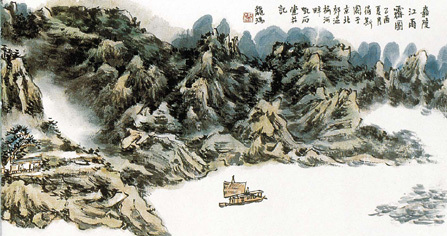
Long Rui is one of the most influential artists of his generation, unlike many of his contemporaries, he doesn't shun traditional styles but combines them with his modern creative vision.
Long is an introspective and disciplined artist. Once he picks up his brush he is completely focused. When not working he is a warm and energetic person.
He holds the top chair of the Research Institute of Chinese Art and manages to make an easy transition between his roles as artist and administrator. Besides his personal artistic talent, Long is also well known because several of his works hang in some important public places in China.
But Long doesn't pursue fame, rather he concentrates on his painting. He creates personal yet scholarly renditions of landscapes. He is also a philosopher at heart and when not absorbed with his work he airs his views on the fast pace of modern living and ponders the intrinsic quality of life.
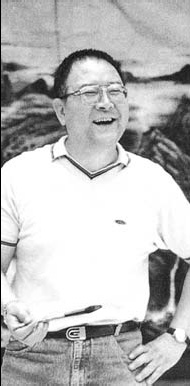
Long was tutored by the late master Li Keran. He was admitted to Li's postgraduate class in 1980, and majored in landscape painting. There, Long received mostly classical training in Chinese ink and brush painting. Yet his work also carried the stamp of his times.
The early 1980s was a period of rapid change in China. The country began opening to the outside world and a flood of Western ideology and artistic influences streamed in.
Chinese art was experiencing a tidal shift at that time. Many Chinese painters deemed the traditional Chinese ink paintings too weak to express their pent-up creativity. That's how Long Rui felt.
Reflecting the times, drastic changes took place in Long's subject matter. He turned away from traditional landscapes and began to experiment with more abstract compositions. His ad hoc solution, to transplant Western aesthetics into traditional Chinese art, led to a mixture of praise and criticism.
Art critic, Wang Luxiang said: "He always aspired to bring traditional Chinese paintings to the world. But his comprehension might have been too simple at that time. He painted a lot of Western-style houses in those days. He placed some little nude figures inside those houses. According to the aesthetics of realistic painters, they were so ugly. Some even said that Long Rui couldn't tell beauty from ugliness."
After a few years of experimentation, Long realized that he was just copying elements of Western art but not making them his own. He returned to his artistic roots to produce work that was predominantly in the traditional Chinese style.
Critic, Lang Shaojun, said: "His return didn't mean that he came back to the starting point, instead he had a renewed understanding about Chinese painting traditions after learning about Western art. He had a renewed fascination with ink and brush."
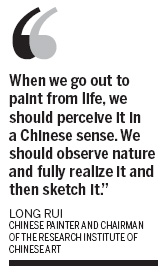
Long eventually developed his own idiosyncratic mode of expression, which combined expressive brushwork with fresh color washes.
His most recent works pay homage to the mid-twentieth century master Huang Binhong. Long explains that he extracts elements of past traditions and lets them mingle with his own creative impulses.
He believes artistic creation is a combination of one's individual character and environmental influences. His work is infused with historical influences but mixed with his own original ideas.
As a landscape painter, Long often heads to the wild searching for inspiration. He insists it's his job to paint not just what he sees but also to try and express how the landscape makes him feel.
Long said: "When we go out to paint from life, we should perceive it in a Chinese sense. We should observe nature and fully realize it and then sketch it."
